Gazania, planting guide and care work
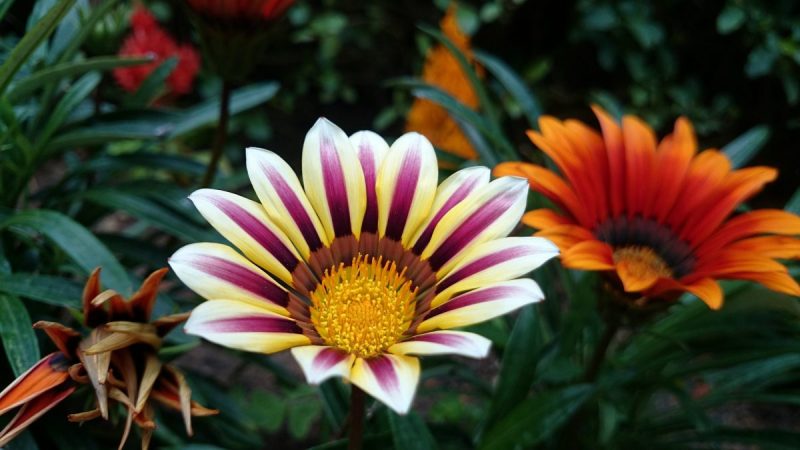
Gazania (Gazania spp.) is a species of flowering plants, belonging to the Asteraceae family, native to South Africa. Gazania is cultivated as a perennial plant in areas with a warm climate and as an annual plant in areas with a colder climate. Due to its vibrant and diverse colors, it is a suitable plant for landscaping gardens, being also easy to care for.
The leaves are narrow (similar to those of common dandelion), silver-green in color. The flowers are solitary, colored in shades of orange, yellow, red, pink, simple or bicolor. Gazania blooms from summer to late autumn (often until the first frost).
Gazania – Varieties and cultivars
- ‘Tiger Stripes’: it has flowers with white or yellow petals on which vertical red or dark pink stripes can be observed;
- ‘Sundrop’: with yellow, simple flowers;
- ‘Daybreak’ mix: it forms large flowers, with a dark shade in the center that gradually fades towards the edge;
- ‘Kiss Bronze’: it has flowers with petals in two nuances of orange and gold;
- ‘Chansonette’: it comes in a variety of colors: orange, red, pink.
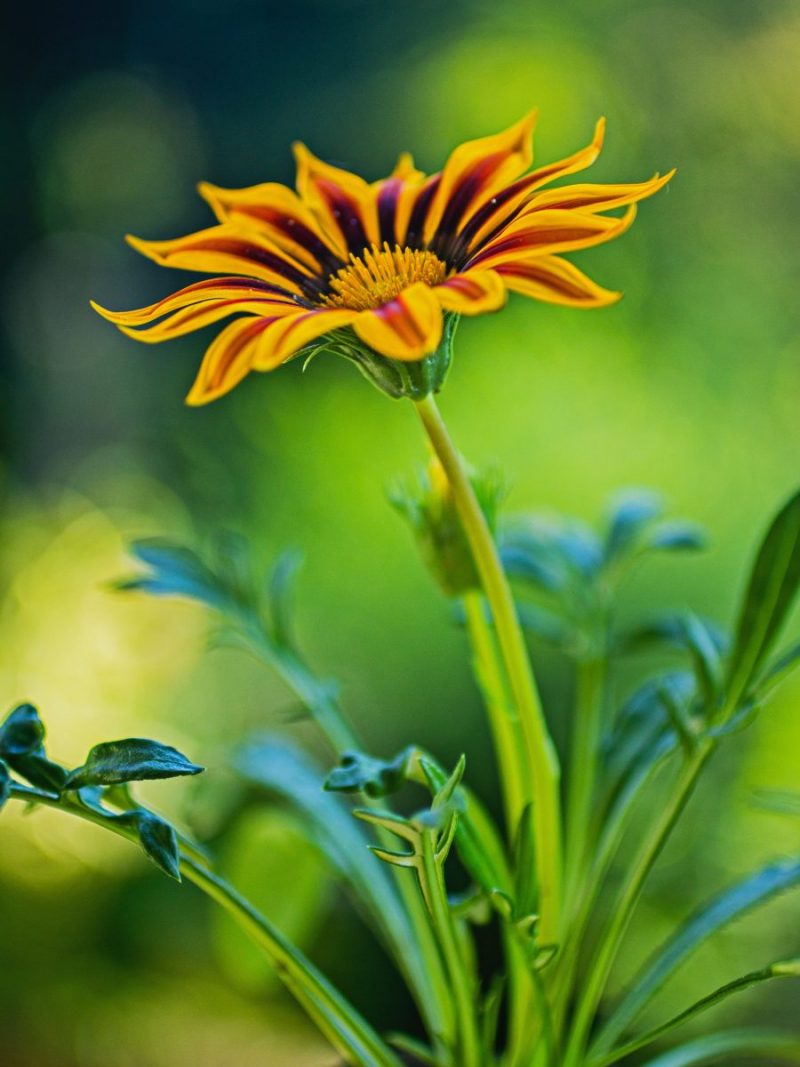
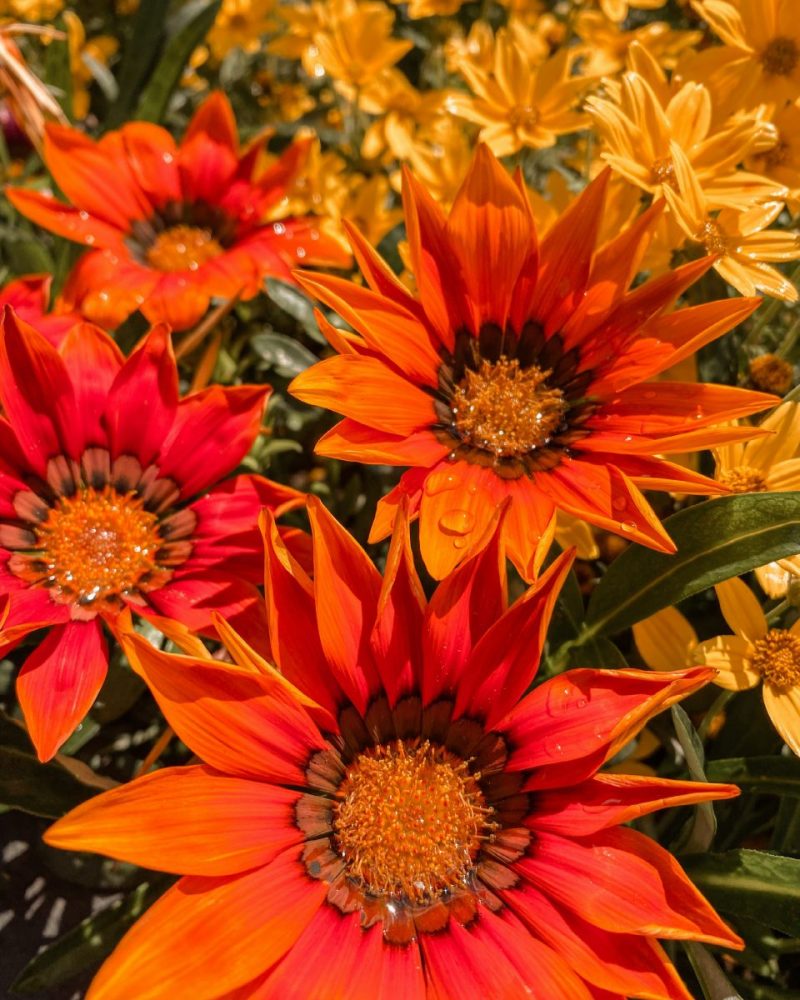
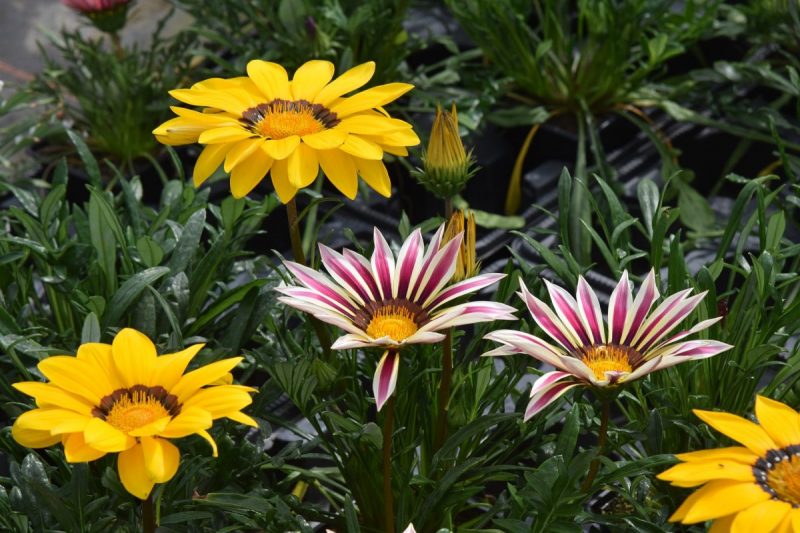
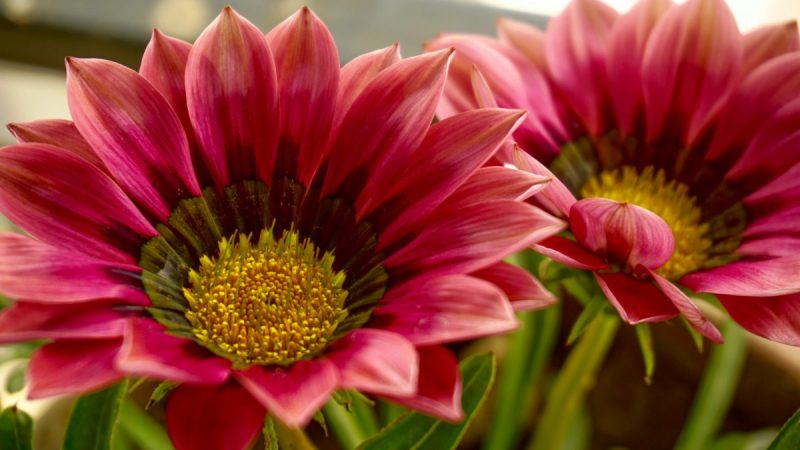
Environmental conditions
Light. Gazania grows in full sun, light having an essential role in the flowering process. In shaded areas or on cloudy days, the plants do not fully open their flowers.
Temperature. Originally from South Africa, Gazania thrives in hot and dry climates.
Soil. It is not picky in terms of soil, but it grows well on sandy, well-drained soils with a neutral pH.
Care – Gazania
Watering. It is a drought-tolerant species and it does not require constant watering. Excessive watering of plants can lead to root rot. To avoid excessive moisture, the soil must be allowed to dry before watering again.
Fertilizing. Gazania reacts favorably to the application of fertilizers specially formulated for flowering plants.
Recommended products
-
You can find products on a different store
Change Store -
You can find products on a different store
Change Store -
You can find products on a different store
Change Store -
You can find products on a different store
Change Store -
You can find products on a different store
Change Store -
You can find products on a different store
Change Store -
You can find products on a different store
Change Store -
You can find products on a different store
Change Store -
You can find products on a different store
Change Store -
You can find products on a different store
Change Store -
You can find products on a different store
Change Store -
You can find products on a different store
Change Store -
You can find products on a different store
Change Store -
You can find products on a different store
Change Store -
You can find products on a different store
Change Store -
You can find products on a different store
Change Store -
You can find products on a different store
Change Store -
You can find products on a different store
Change Store -
You can find products on a different store
Change Store -
You can find products on a different store
Change Store -
You can find products on a different store
Change Store -
You can find products on a different store
Change Store -
You can find products on a different store
Change Store -
You can find products on a different store
Change Store
Propagation. It can be propagated by seeds, cuttings or by dividing the bush.
The seeds can be sown in heated spaces (in alveolar trays/crates) approximately 2 months before planting them outdoors or directly in the garden, in spring, when the danger of frost has passed.
Recommended products
-
You can find products on a different store
Change Store -
You can find products on a different store
Change Store -
You can find products on a different store
Change Store -
You can find products on a different store
Change Store -
You can find products on a different store
Change Store -
You can find products on a different store
Change Store -
You can find products on a different store
Change Store -
You can find products on a different store
Change Store -
You can find products on a different store
Change Store -
You can find products on a different store
Change Store -
You can find products on a different store
Change Store -
You can find products on a different store
Change Store -
You can find products on a different store
Change Store -
You can find products on a different store
Change Store -
You can find products on a different store
Change Store -
You can find products on a different store
Change Store -
You can find products on a different store
Change Store -
You can find products on a different store
Change Store -
You can find products on a different store
Change Store -
You can find products on a different store
Change Store -
You can find products on a different store
Change Store -
You can find products on a different store
Change Store -
You can find products on a different store
Change Store -
You can find products on a different store
Change Store
Pruning. Dried flowers are removed to encourage a continuous flowering until the end of the growing season.
Recommended products
-
You can find products on a different store
Change Store -
You can find products on a different store
Change Store -
You can find products on a different store
Change Store -
You can find products on a different store
Change Store -
You can find products on a different store
Change Store -
You can find products on a different store
Change Store -
You can find products on a different store
Change Store -
You can find products on a different store
Change Store -
You can find products on a different store
Change Store -
You can find products on a different store
Change Store -
You can find products on a different store
Change Store -
You can find products on a different store
Change Store -
You can find products on a different store
Change Store -
You can find products on a different store
Change Store -
You can find products on a different store
Change Store -
You can find products on a different store
Change Store -
You can find products on a different store
Change Store -
You can find products on a different store
Change Store -
You can find products on a different store
Change Store -
You can find products on a different store
Change Store -
You can find products on a different store
Change Store -
You can find products on a different store
Change Store -
You can find products on a different store
Change Store -
You can find products on a different store
Change Store
Diseases and pests
Gazania can be affected by rot and powdery mildew, and poorly drained soils with excessive moisture cause root rot. Among the pests, the most common are aphids, mites and wooly apple aphids.
Additionally:
- Some Gazania species are considered invasive in certain regions;
- The flowers close at night and open only partially on cloudy days.















































































































































































































































































































































































































































